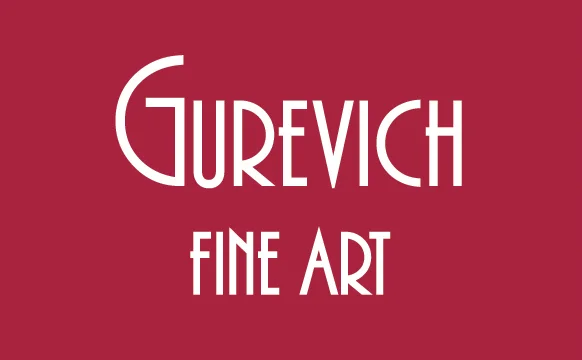Gurevich Fine Art proudly presents Nouvelle ‘peg II, the second annual exhibit of work from 2012’s graduates and post-graduates from the University of Manitoba’s School of Art. Nouvelle ‘peg II showcases the emerging voices in painting from June 8th to 22nd, 2012.
Gurevich Fine Art is pleased to include the unique vision of the developing artist into its collection of contemporary art. The selected artists have created work depicting the suspended state between community and independence. With focused skill and youthful confidence each artist explores their relationship with nature and industry in a digital age.
Nouvelle ‘peg was conceived by the gallery and is assisted by one of its noted artists, Cliff Eyland. A professor of painting at the School of Art, Eyland’s work is exhibited across Canada and internationally. Together they have selected Anna Robinson, Ashley Feduniw, Jillian Peters McGillvray, Kae Sasaki, Shannon Yascheshen and Gurpreet Sehra to represent the newest generation of artists in Winnipeg.
Nouvelle ‘peg II offers a diversity of images and ideas: from mediations on typewriters and trains to the lush landscapes of “hoser” art, viewers will be simultaneously seduced by the surface beauty and engaged by the complex narratives within each piece. Nouvelle ‘peg II promises an opportunity to catch a glimpse of what’s to come from Winnipeg’s latest electric contemporary artists.
Nouvelle ‘peg officially opens Friday June 8th, with a reception at 7 pm.
Winnipeg’s Gurevich Fine Art has put together a show of paintings by several artists who have just graduated from the University of Manitoba School of Art, along with work by one of the School’s current graduate students. The gallery has asked me to write a few words, and I am happy to do that.
Painting is a form of illustration these days, whether or not a work is photorealist or completely abstract. Illustration is a condition of contemporary painting because paintings are now seen as images first before they are seen in terms of their constituent materials or forms. Even a new abstract painting must account for itself as an image that makes reference to previous abstract paintings. Images are the ground zero of painting now, and images are illustrations, but in a sense they are “illustrations for nothing” since they are not commissioned but wholly the product of the artist’s imagination and skill. What these works illustrate is sometimes not so straightforward.
Anna Robinson and Ashley Feduniw are smoking buddies whose Art Barn studios faced each other for the last – their final – year at the School of Art. Both artists depict mechanical things in their paintings – typewriters, trains and hydro poles -- as if to confound our sense that we live in a purely digital age. Feduniw’s typewriter paintings and Robinson’s train cars and hydro poles harken back to a precisionist aesthetic of artists of the 1920s such as Charles Sheeler and Charles Demuth, art that celebrated the machine age. It is interesting to me that Feduniw and Robinson are preoccupied with the non-digital, the stubbornly physical and industrial realities that, indeed, have not disappeared into digital culture any more than have paint and canvas.
One way to look at Jill Peters’s recent painting is to place it within what by now is a hallowed tradition of “hoser” art, that is, art that revels in Canadian identity, landscape and rurality. Much of this recent painting, like Peters’s, falls within the stylistic orbit of the art superstar Peter Doig, however Peters’s work may simply share sources with Doig that include the Canadian wilderness, hunting and winter sports, things with which many Manitobans grow up.
Shannon Yashcheshen revives a collagist mode of painting reminiscent of early pop art – it might be more specifically called “photomontage” -- in which the seamless surfaces of commercial culture are restored to the source that is a torn paper collage. This is accomplished by means of re-rendering of an image in evenly applied paint. Yashcheshen also makes hyper-realistic paintings based on her own photographs. Her subject matter is almost invariably female, and her work enacts a value-added strategy by which an ordinary photo or a miniscule collage is blown up into a carefully made painting.
Kae Sasaki makes paintings that are hybrids of Japanese and European fairy tales. She paints in the format of traditional Japanese folding screens, but mixes up references to Grimm brothers and ancient Japanese stories that, however accessible as paintings, require special knowledge of their sources to fully appreciate. Like Ashley Feduniw and Shannon Yascheshen, she uses an impeccable realist technique as a given, but then fractures the imagery and the narratives.
Gurpreet Sehra is having a lot of fun lately making paint on fabric works that interrogate aspects of male Punjabi culture. She plays with feminine tropes across a western/Asian divide in a way that makes a lot of cross-dressing sense."
- Cliff Eyland is a Winnipeg artist

